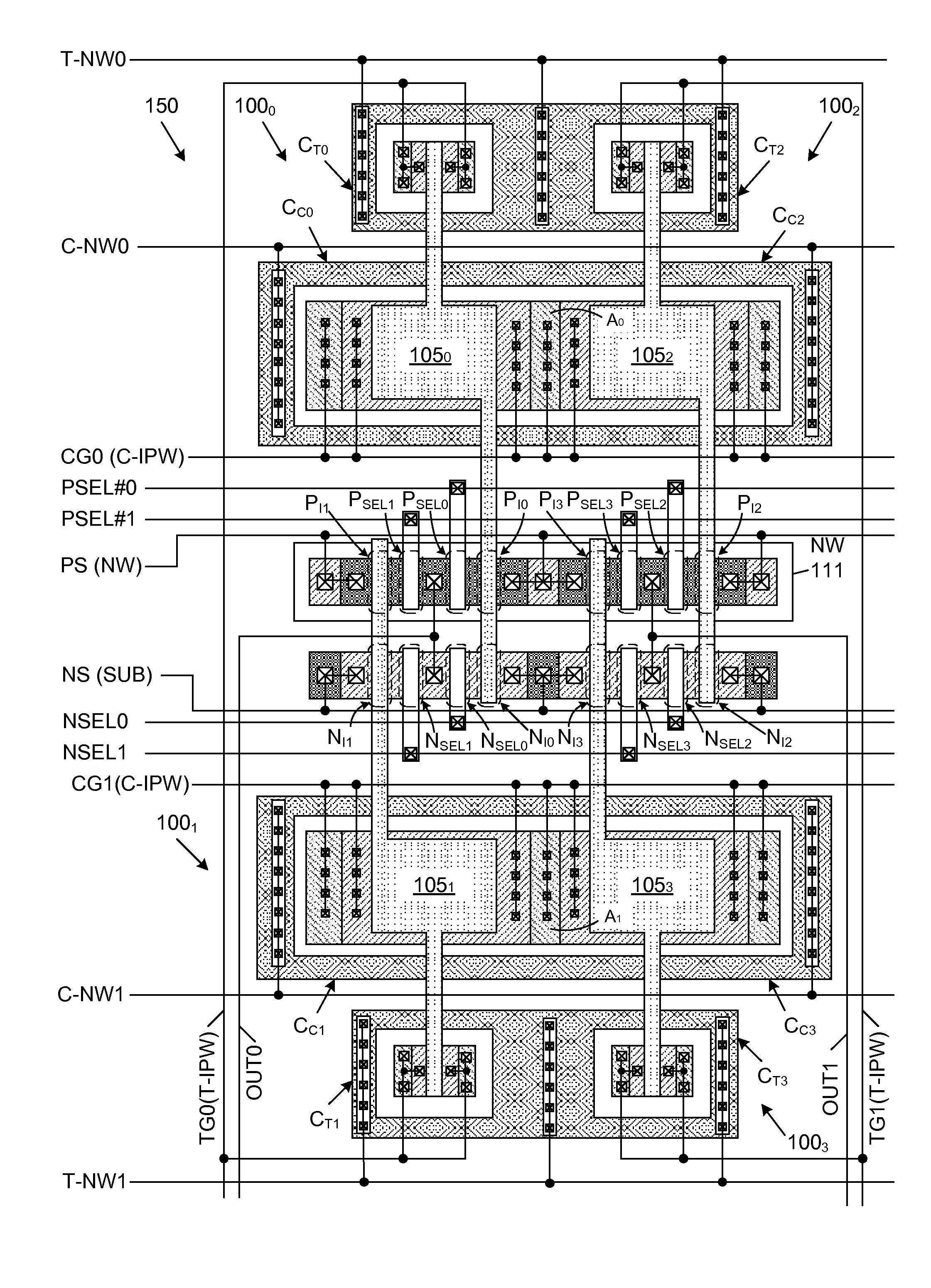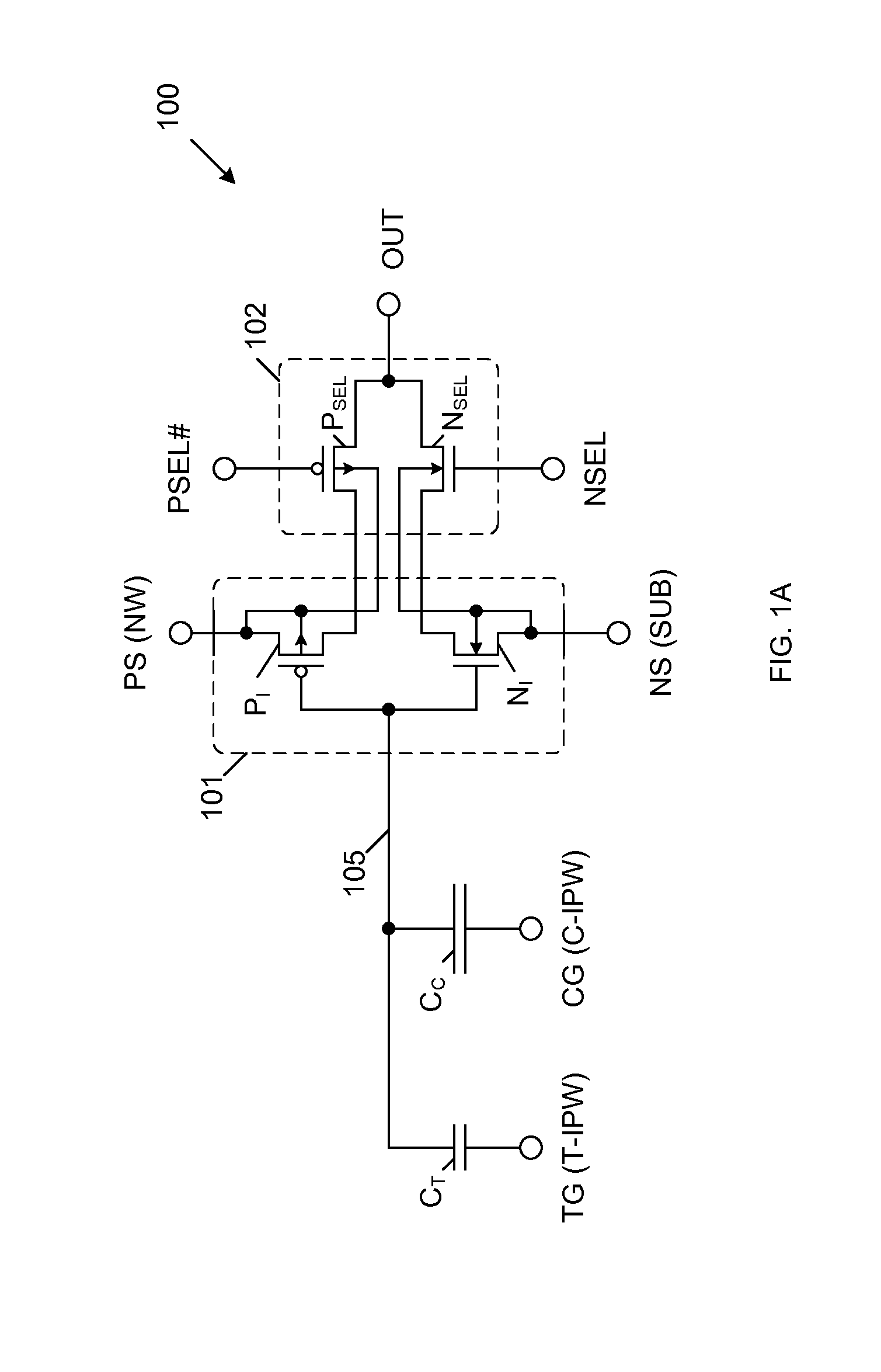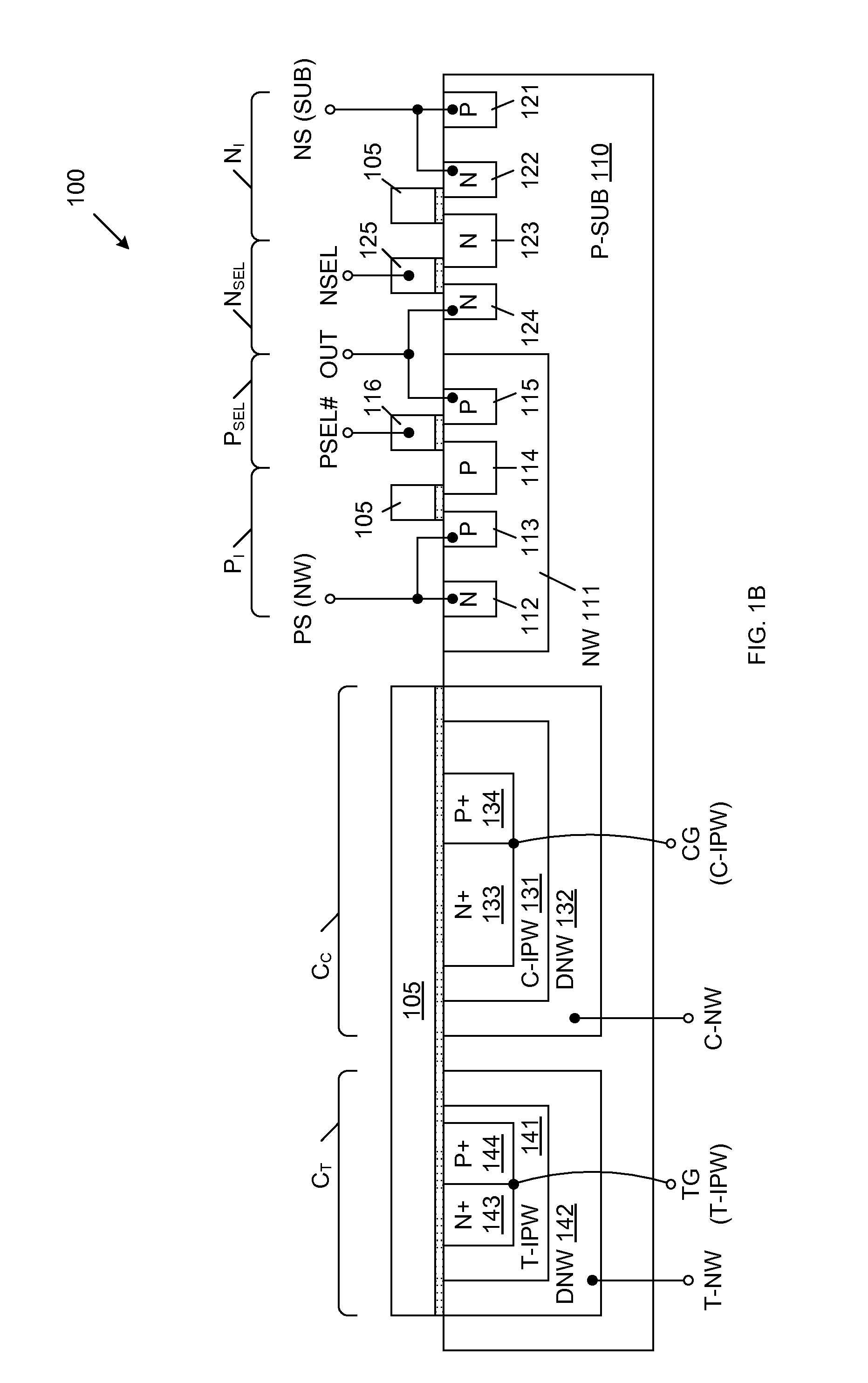Floating gate inverter type memory cell and array
a floating gate inverter and memory cell technology, applied in semiconductor devices, solid-state devices, instruments, etc., can solve the problems of not being able to operate ultra-low power and imposing limitations, and achieve the effect of improving the layout of non-volatile memory cells and small layout area
- Summary
- Abstract
- Description
- Claims
- Application Information
AI Technical Summary
Benefits of technology
Problems solved by technology
Method used
Image
Examples
first embodiment
[0031]FIG. 1A is a circuit diagram of a single-poly non-volatile memory cell 100 in accordance with a first embodiment of the present invention. Memory cell 100 includes tunnel capacitor CT, control capacitor CC, CMOS inverter circuit 101, and read output circuit 102. CMOS inverter circuit 101 includes PMOS pull-up transistor PI and NMOS pull-down transistor NI. Read output circuit 102 includes PMOS select transistor PSEL and NMOS select transistor NSEL. Tunnel capacitor CT, control capacitor CC, PMOS pull-up transistor PI and NMOS pull-down transistor NI share a common floating gate electrode 105. That is, floating gate electrode 105 forms the gates of PMOS pull-up transistor PI and NMOS pull-down transistor NI, and also forms the electrodes of tunnel capacitor CT and control capacitor CC. In the described embodiments, floating gate electrode 105 is conductively doped polysilicon, which is fabricated in accordance with a conventional single-poly CMOS logic process. The counter-elec...
second embodiment
[0077]In accordance with an alternate embodiment of the present invention, the tunnel capacitor CT is eliminated from memory cell 100, and the NMOS transistors NI and NSET are located in an isolated p-well region (IPW). Also in this embodiment, the NMOS pull-down transistor NI of the CMOS inverter 101 (i.e., the NMOS pull-down transistor NII of the CMOS inverter circuit 201, below) serves as an injection capacitor in the program and erase modes. Also in this embodiment, the PMOS pull-up transistor PI of the CMOS inverter 101 (i.e., the PMOS pull-up transistor PII of the CMOS inverter circuit 201, below) serves as an injection capacitor in the erase mode. A significant reduction in the required memory cell layout area is achieved due to the elimination of the tunnel capacitor CT. In a particular embodiment, the required layout area of the memory cell can be reduced from about 55 um2 to about 33 um2. This alternate embodiment is described in more detail below in connection with FIGS. ...
PUM
 Login to View More
Login to View More Abstract
Description
Claims
Application Information
 Login to View More
Login to View More - R&D
- Intellectual Property
- Life Sciences
- Materials
- Tech Scout
- Unparalleled Data Quality
- Higher Quality Content
- 60% Fewer Hallucinations
Browse by: Latest US Patents, China's latest patents, Technical Efficacy Thesaurus, Application Domain, Technology Topic, Popular Technical Reports.
© 2025 PatSnap. All rights reserved.Legal|Privacy policy|Modern Slavery Act Transparency Statement|Sitemap|About US| Contact US: help@patsnap.com



